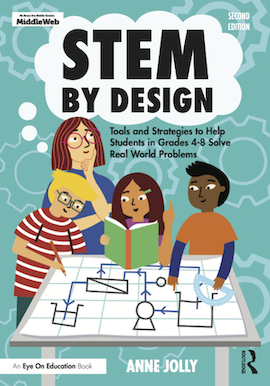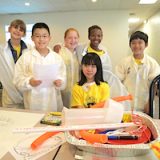Cultivate Creativity in Your STEM Classroom
Creativity is crucial when it comes to STEM education. According to the Future of Jobs report, creativity is one of the three top “must-have” skills in our workforce and society. Since creativity is crucial for learning, fostering creativity should be a natural part of your STEM projects.
How can you put creativity squarely in the learning spotlight in your STEM program? First, you may need to think about how creativity looks in students. Take a look at these characteristics of creative kids and you may find that you already work with your students to do help them in some of these areas.
Creative students generally do some of these things:
- Express curiosity and ask perceptive questions.
- Combine knowledge from a variety of sources to create new, out-of-the-box, imaginative ideas.
- Generate a lot of different ideas and solutions for problems.
- Rearrange and reorganize ideas in new and often surprising ways to reach solutions.
- Examine their failures to get more information and ideas for solving a challenge.
- Evaluate their solutions and rework their ideas to improve results.
- Communicate their ideas and results in original ways.
- Show unusual commitment and persistence in finding solutions for problems.
- Take ownership of their projects and their learning.
If you want to produce creative students, you first must build a classroom culture in which creativity can grow and adopt teaching practices that allow it to bloom. Creativity flourishes in cultures where students feel safe and accepted, and is born in an atmosphere of enthusiasm, support, and encouragement.
Use STEM to Build Creativity
The teaching/learning approach you use will determine your classroom culture. STEM introduces choice and freedom into the classroom and makes space for creativity to flourish. STEM projects give students opportunities to build creative skills through inquiry, critical and innovative thinking, evaluating ideas and solutions, collaborating, and preparing work for presentation.

High-quality STEM, such as the integrated STEM program described in this second edition of STEM by Design, has a growing research base for achieving positive student outcomes in content knowledge and learning skills that will help kids be successful in life.
Avoid Creativity Killers
A word to the wise on practices to avoid if you want to establish a creative classroom culture. According to Leslie Owen Wilson in her article, Killing or Fostering Creativity in Children, avoid creativity killers such as . . .
- Putting kids under constant surveillance. This pressure drives risk-taking and creativity underground.
- Giving kids stepwise procedures to follow and telling them how to do things. In that situation, creativity is a waste of time.
- Using prizes. External rewards inhibit the natural pleasure that comes from creating and innovating.
- Restricting choices and opportunities. Let kids follow where their curiosity and creativity lead them on the journey to problem-solving.
- Robbing kids of time. Creativity demands open-ended time to explore ideas, reflect, wonder, and experiment.
Introducing any kind of classroom change requires time, knowledge and information, preparation, energy, and persistence. Cultivating a classroom that focuses on building creative students is a challenging task. Jump right in and begin making a difference for your students and our world.











